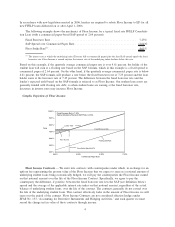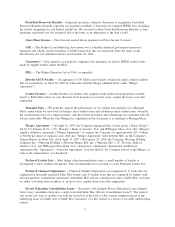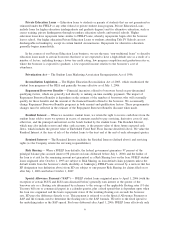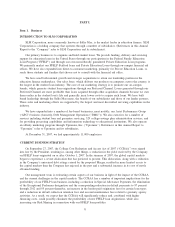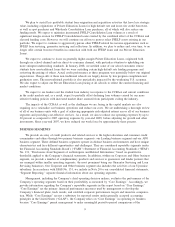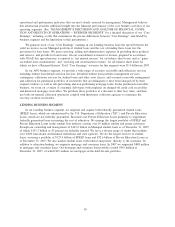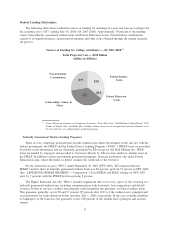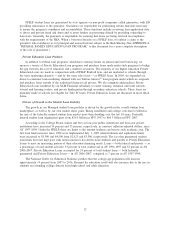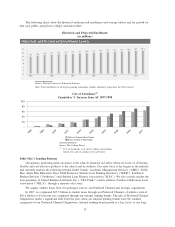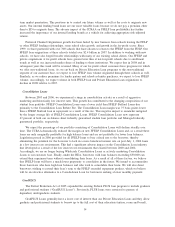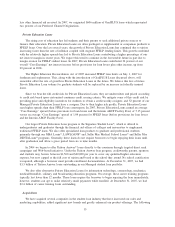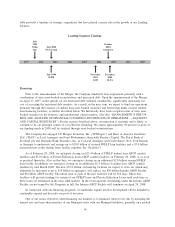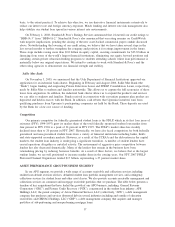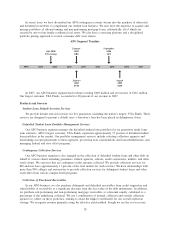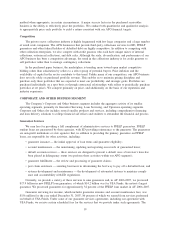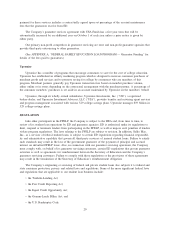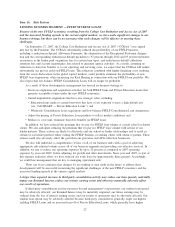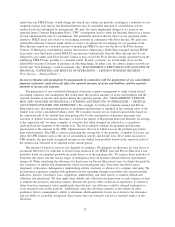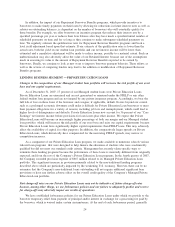Sallie Mae 2007 Annual Report Download - page 15
Download and view the complete annual report
Please find page 15 of the 2007 Sallie Mae annual report below. You can navigate through the pages in the report by either clicking on the pages listed below, or by using the keyword search tool below to find specific information within the annual report.term market penetration. This positions us to control our future volume as well as the costs to originate new
assets. Our internal lending brand loans are our most valuable loans because we do not pay a premium other
than to ED to originate them. The adverse impact of the CCRAA on FFELP loan profitability has further
increased the importance of our internal lending brands as a vehicle for achieving appropriate risk-adjusted
returns.
Preferred Channel Originations growth has been fueled by new business from schools leaving the FDLP
or other FFELP lending relationships, same school sales growth, and growth in the for-profit sector. Since
1999, we have partnered with over 300 schools that have chosen to return to the FFELP from the FDLP. Our
FFELP loan originations at these schools totaled over $2.4 billion in 2007. In addition to working with new
schools, we have also forged broader relationships with many of our existing school clients. Our FFELP and
private originations at for-profit schools have grown faster than at not-for-profit schools due to enrollment
trends as well as our increased market share of lending to these institutions. We expect that in 2008 and in
subsequent years this trend will be reversed. Many of our for-profit school customers have programs for which
we offer non-traditional loans. As we cut back on Private Education Loan programs to this non-traditional
segment of our customer base, we expect to lose FFELP loan volume originated through these schools as well.
Similarly, as we reduce premiums for lender partner and school-as-lender purchases, we expect to lose FFELP
volume. Accordingly, we expect volume in both FFELP loan and Private Education Loan originations to
decline in 2008 relative to 2007.
Consolidation Loans
Between 2003 and 2006, we experienced a surge in consolidation activity as a result of aggressive
marketing and historically low interest rates. This growth has contributed to the changing composition of our
student loan portfolio. FFELP Consolidation Loans earn a lower yield than FFELP Stafford Loans due
primarily to the Consolidation Loan Rebate Fee. The Consolidation Loan margin was 75 basis points lower
than a FFELP Stafford loan in repayment as a result of this fee. This negative impact is somewhat mitigated
by the longer average life of FFELP Consolidation Loans. FFELP Consolidation Loans now represent
67 percent of both our on-balance sheet federally guaranteed student loan portfolio and Managed federally
guaranteed portfolio, respectively.
We expect the percentage of our portfolio consisting of Consolidation Loans will decline steadily over
time. The CCRAA dramatically reduced the margin on new FFELP Consolidation Loans and, as a result these
loans are only marginally profitable for high balance loans and are not profitable for lower loan balances.
Legislation passed in 2006 provided for all FFELP loans to bear a fixed rate to the borrower, thereby
eliminating the potential for the borrower to lock in a more beneficial interest rate on post-July 1, 2006 loans
in a low interest rate environment. This had a significant adverse impact on the Consolidation Loan industry
that developed as a result of the low interest rate environment that existed between 2000 and 2004.
Accordingly, we are no longer buying Wholesale Consolidation Loans or actively marketing Consolidation
Loans to our customer base. Finally, under the HEA, borrowers with loan balances exceeding $30,000 can
extend their repayment term without consolidating their loans. As a result of all of these factors, we believe
that FFELP loans will have a much lower propensity to consolidate in the future. We intend to accommodate
those borrowers who have high loan balances and who wish to consolidate their loans. We will also direct
borrowers wishing to extend their loan’s term to the FFELP extended repayment product, which we believe
will be an attractive alternative to a Consolidation Loan for borrowers seeking a lower monthly payment.
GradPLUS
The Deficit Reduction Act of 2005 expanded the existing Federal PLUS loan program to include graduate
and professional students (“GradPLUS Loans”). Previously, PLUS loans were restricted to parents of
dependent, undergraduate students.
GradPLUS Loans generally have a lower rate of interest than our Private Education Loans and they allow
graduate and professional students to borrow up to the full cost of their education (tuition, room and board),
14


